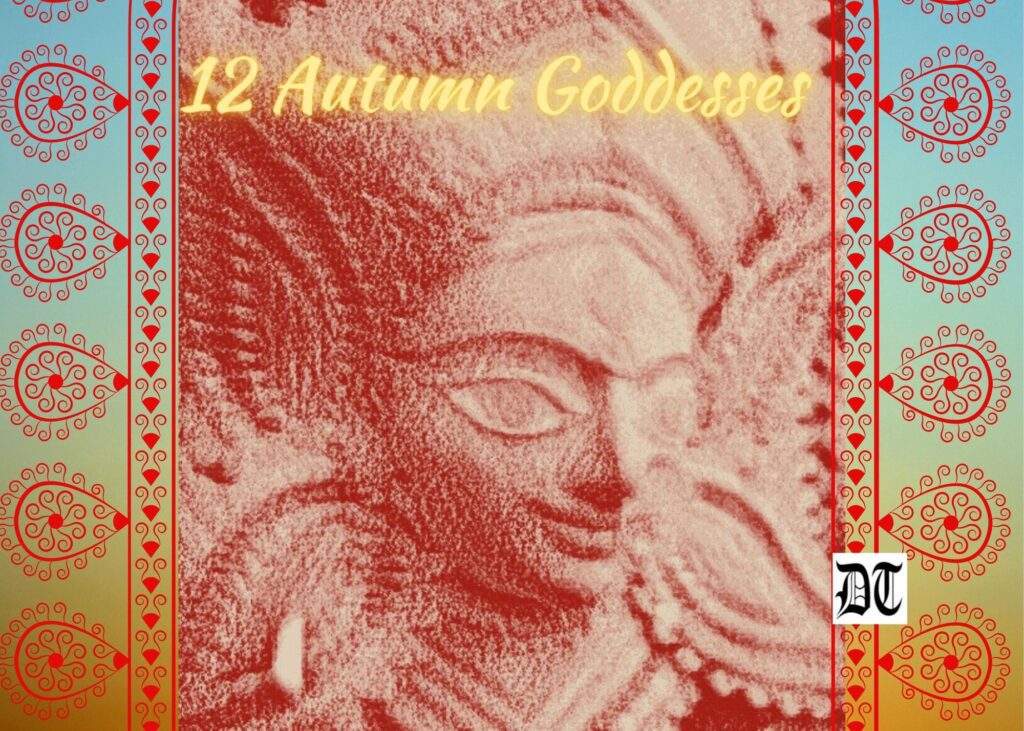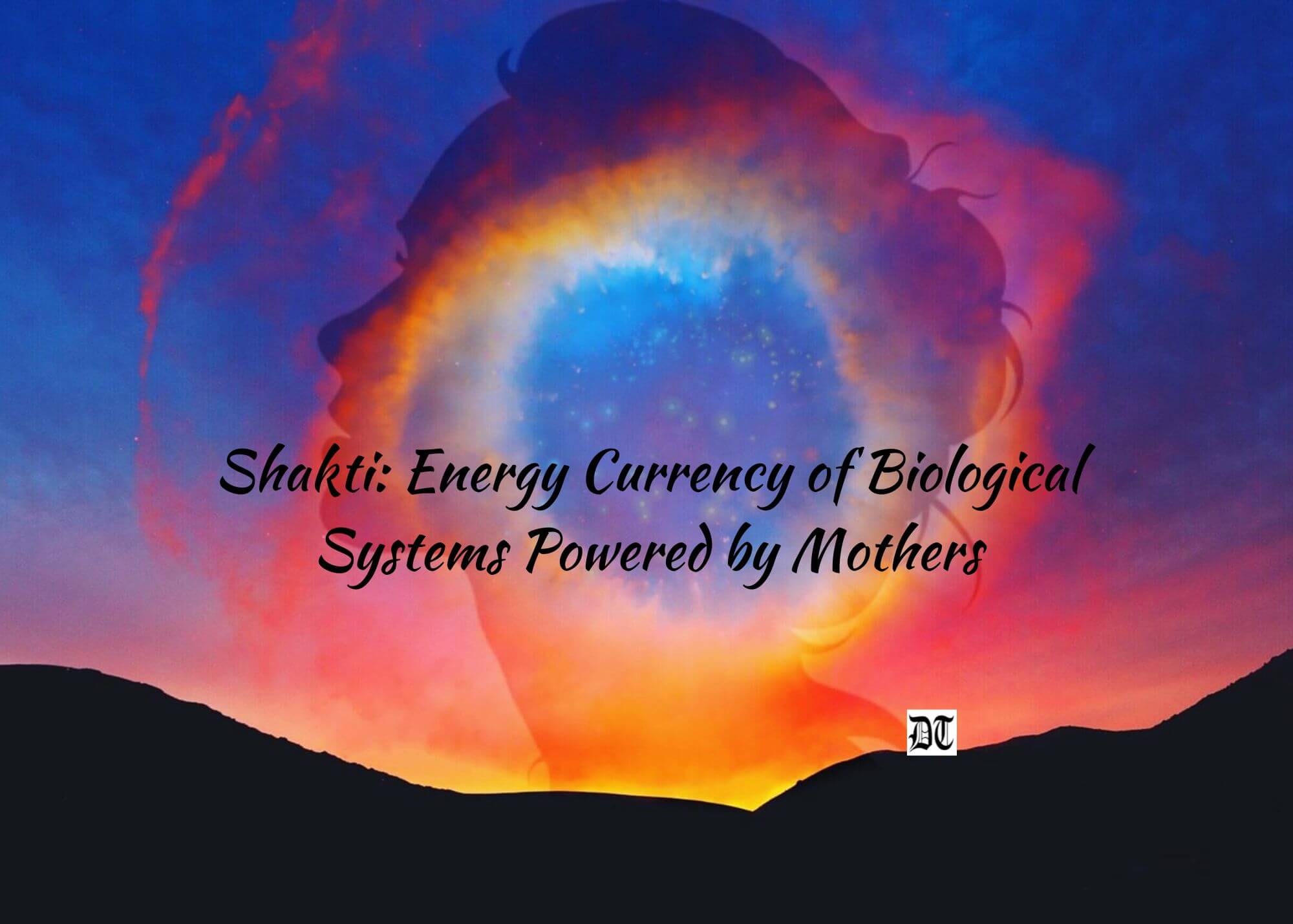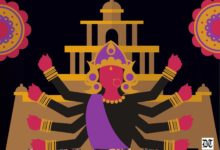Mothers are the only source of mitochondrial DNA, which produces ATP, the energy currency of all biological systems. Genetically, the long line of mothers thus passes on the power source. Tapati elucidates that the human mother inspired mother-worship in ancient civilisations, including Adi Shakti – an exclusive Special Feature for Different Truths.

Bodhan means awakening. The untimely worship of Durga is named Akaal Bodhan; the usual time of her worship is during spring. It is said that during the summer solstice, gods rest and sleep; it is night-time for them. Hence, they need to be awakened before the puja in the month of Ashwin.
Spring falls in the winter solstice, which is daytime for the gods; hence during Basanti puja, Durga in another form is worshipped when Bodhan or rituals for awakening are not required.
The divine Mother, Devi Adi Parashakti, manifests herself in various forms, representing the universal creative force.
The divine Mother, Devi Adi Parashakti, manifests herself in various forms, representing the universal creative force. She becomes Mother Nature (Mula Prakriti Parvati), who gives birth to all life forms, such as plants, animals, etc. She sustains and nourishes them through her body, the Earth with its animal life, vegetation, and minerals. Ultimately, she re-absorbs all life forms or “devours” them to sustain herself as the power of death, feeding on life to produce new life. She also gives rise to Maya (the illusory world) and Prakriti, the force that galvanises the divine ground of existence into self-projection as the cosmos. Adi Parashakti manifests the Earth itself. Hindu worship of the divine Mother may be traced back to pre-Vedic prehistoric India.
Shakti is the motive force behind all action and existence in the phenomenal cosmos. The worship of the mother deity can be traced back to early Vedic culture and perhaps even before. The Rigveda calls the divine female power Mahimata (R.V. 1.164.33), literally “Great Mother”. In places, the Vedic literature alludes to her as Viraj, the universal mother, Aditi, the mother of Gods, and Ambhrini, the one born of the Primeval Ocean.
Durga, the wife of Shiva, is a warrior Goddess who represents motherhood’s empowering and protective nature. An incarnation of Durga is Kali, who came from her forehead during the war (as a means of defeating Durga’s enemy, Mahisasur). Durga and her incarnations are mainly worshipped in Bengal.
In Vedic times, the worship of Shakti or Energy was prevalent as narrated in Rigveda in Devi Sukta and Ratri Sukta…
In Vedic times, the worship of Shakti or Energy was prevalent as narrated in Rigveda in Devi Sukta and Ratri Sukta: “I am the Cosmos and the fundamental one governing the Universe.”
Danu also spelt Anu, or Dana, in Celtic religion, is the Earth-mother Goddess or the female principle, who was honoured under various names from eastern Europe to Ireland. Camenae in Roman religion, the Goddess who were perhaps originally water deities, having a sacred grove and spring. The Greeks always saw in the Great Mother a resemblance to their own Goddess Rhea. In all her aspects, Roman, Greek, and Oriental, the Great Mother was characterised by essentially the same qualities. Most prominent among them was her Universal Motherhood. Across all neolithic cultures spread across Egypt, Mediterranean, Syria, Iran, and parts of S.E. Europe, female figurines in bones, stones, or clay have been found that are said to be the direct descendants of the images of deities created by the older Mesopotamia, Syrian, and Greek societies.
For ages, the three main types of human society that has been: hunting-food gatherers, pastoral, and agricultural. Regarding the cults and rituals followed by the food gatherers and agrarian societies, the worship of the Mother Goddess was at the core of all their magico-religious beliefs. As per prehistoric thinking, women, who were also the first cultivators with their childbearing capabilities, would create a similar effect on the Earth’s vegetative powers leading to good harvests. The Earth Mother or the Mother Goddess was conceptualised from a human mother.
How perfect is our understanding for ages and ages! Devi, the Divine Female, revered by all as is revered a mother, is better and universally known as the Mother Goddess. Reverence for ‘mother’ is inherent in anyone born, a beast or a man, and is the first pious impulse in a child, which shapes the flesh into a human face. The first man, it seems, while contemplating the idea of the unseen Divine, looked at the beginning of the woman who bore him, the protective, caring, and loving mother, and discovered in her the ultimate ‘divinity’ and the manifest form of the unseen Divine. Devi, the Goddess, thus, transformed as mother and has been for ages the Mother Goddess.
…we receive 100% mitochondrial DNA from the mother. And that that is very special.
While discussing this, we get an element of surprise as one learns the astonishing relationship between Science and Mythology. It is a scientific fact that we receive 50% nuclear DNA from the mother and the other 50% from the father. But we receive 100% mitochondrial DNA from the mother. And that that is very special.

Mitochondrial DNA is the small circular chromosome found inside mitochondria. These organelles found in cells have often been called the cell’s powerhouse. The mitochondria, and thus mitochondrial DNA, are passed almost exclusively from mother to offspring through the egg cell.
Mitochondria produce ATP. It is the energy currency of the biological system, which is subsequently used throughout the cell as a source of chemical energy. They were discovered by Albert von Kölliker, in 1857, in the voluntary muscles of insects. The mitochondrion is popularly nicknamed the “powerhouse of the cell”. In addition to supplying cellular energy, mitochondria are involved in other tasks, such as signalling, cellular differentiation, and cell death, as well as maintaining control of the cell cycle and growth.
…one receives the Power (energy DNA) from his mother. A mother received it from her mother, and so on.
For everything we do, we require ATP. It’s the source of energy for doing all activities. For example, when moving a hand, you consume billions of ATPs. Thus, one receives the Power (energy DNA) from his mother. A mother received it from her mother, and so on. And then a Mythology was created, God of Power is Mother, Adi Shakti.
Shakti is both Maya and Mahamaya. As Maya, she creates bondage, and as Mahamaya, she liberates. As Avidya-shakti, ignorance, she traps us; and as Vidya-shakti, Knowledge-giver, she frees us from these traps. She is famous as ten Mahavidyas and resides in fifty-one peeths, the holy places scattered all over the present-day countries, India, Sri Lanka, Bangladesh, Nepal, Tibet, Bhutan, and Pakistan, in different forms.
Mother promises to incarnate: “Whenever demons cause trouble, I will manifest myself and destroy the enemies,” she says in Chandi, Shakti’s fiery, destructive power.
Picture design by Anumita Roy, Different Truths





 By
By
 By
By
